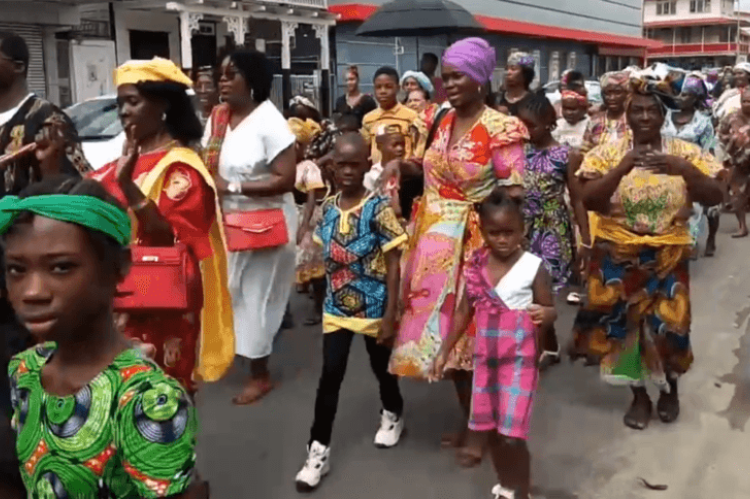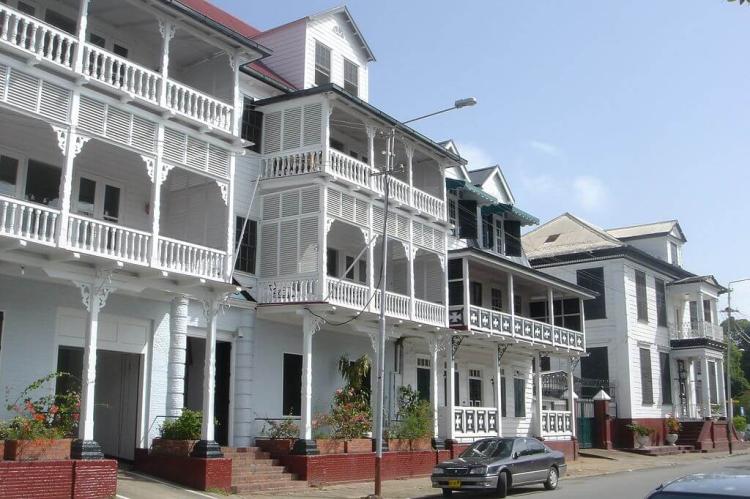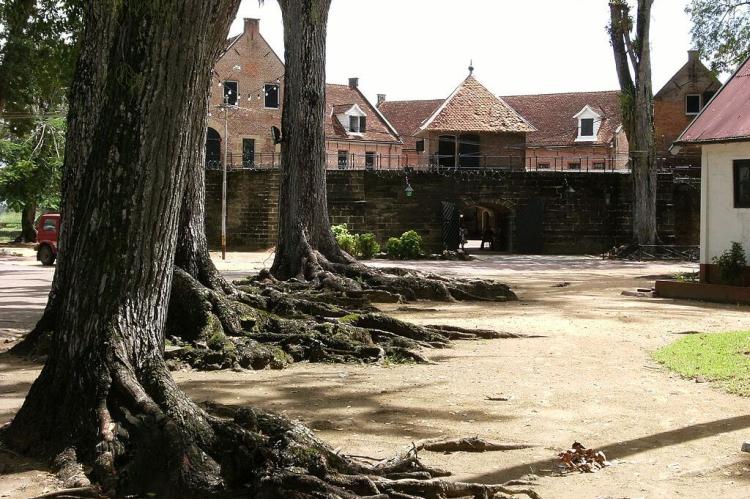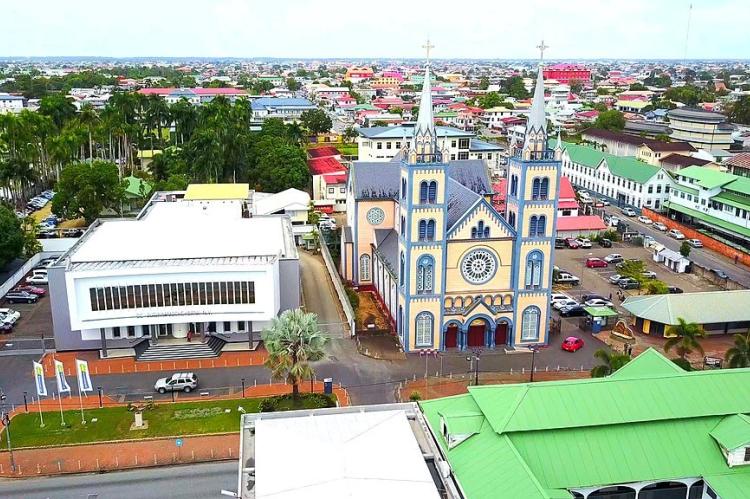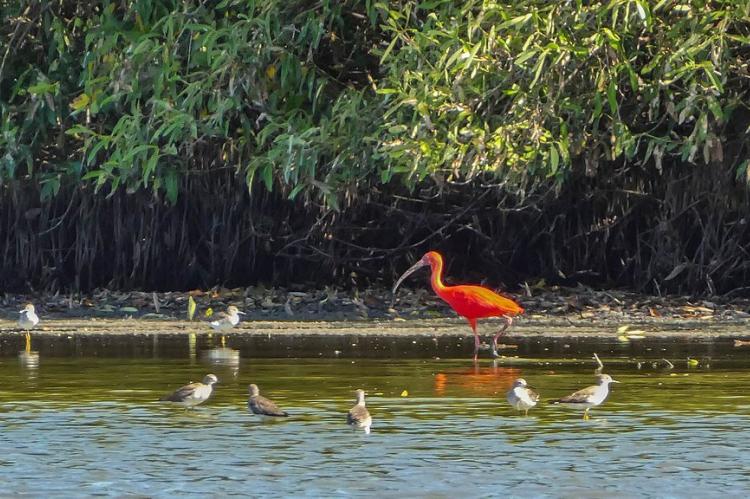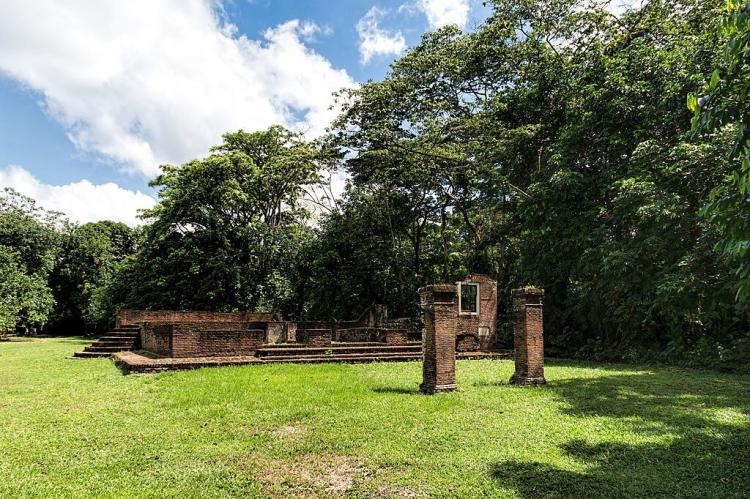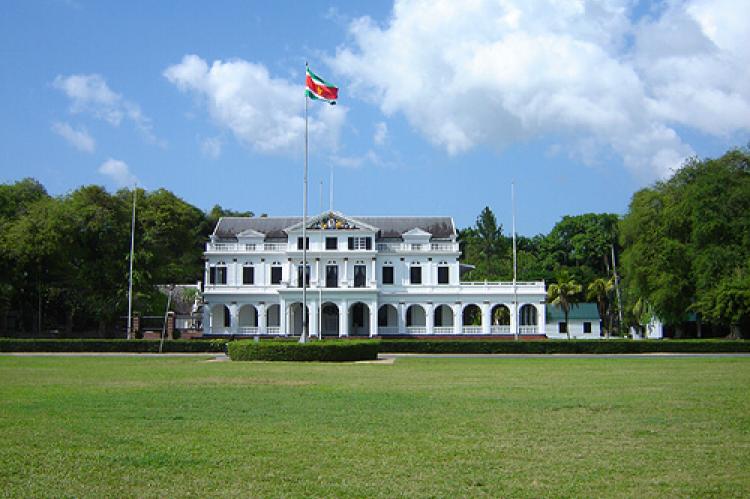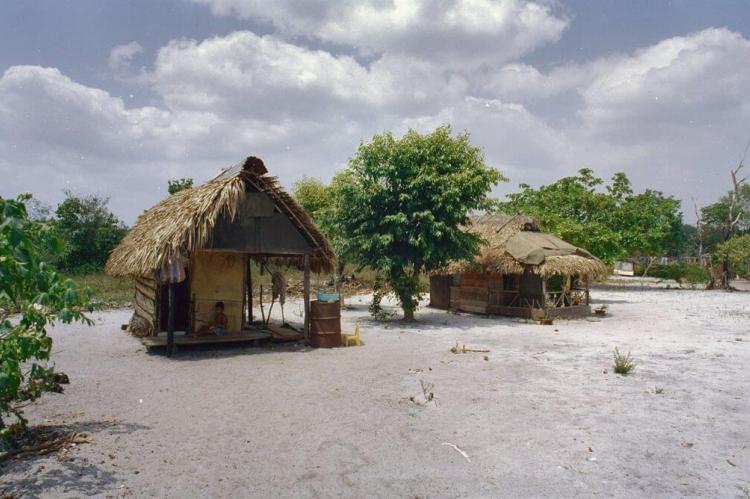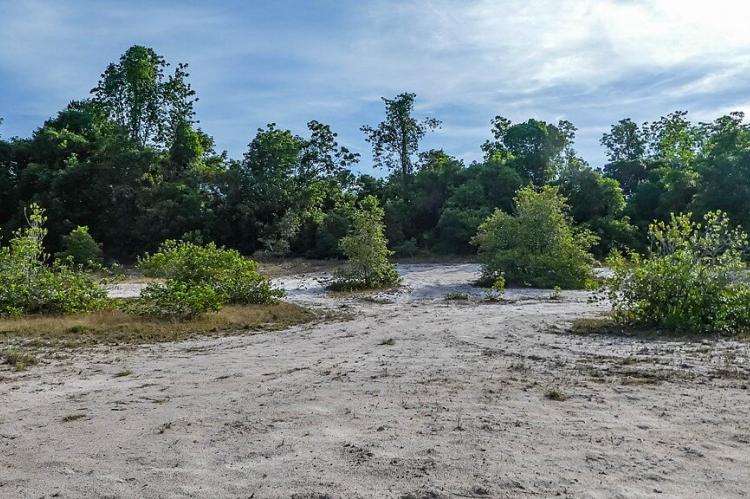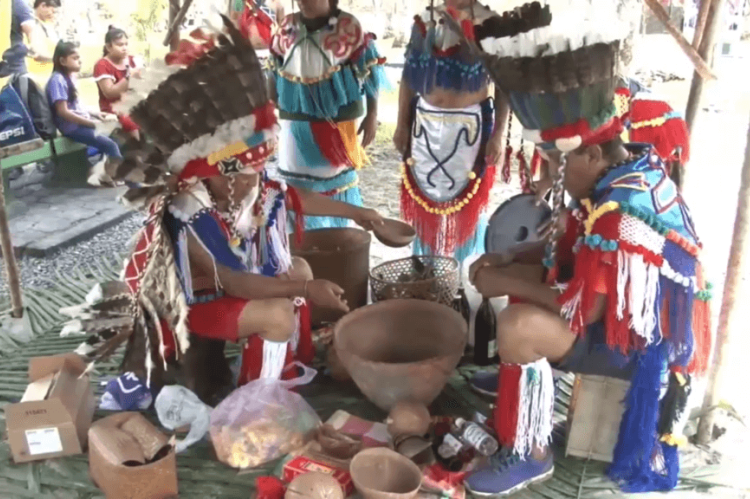Suriname: Cultural Landscape
Suriname's cultural landscape is a captivating blend of indigenous heritage, colonial influences, African traditions, and immigrant communities. This diversity, expressed through art, music, cuisine, festivals, and daily life, creates a unique and dynamic cultural experience for residents and visitors alike.
The Cultural Landscape of Suriname
Suriname, located on the northeast coast of South America, boasts a rich and diverse cultural landscape influenced by its history, ethnic diversity, and natural surroundings. The country's cultural fabric is woven together by its indigenous heritage, European colonial influences, African roots, and the presence of various immigrant communities.
-
Indigenous Heritage: Indigenous cultures play an important role in Suriname's diverse cultural fabric. The Arawak, Carib, and Warao, among other indigenous peoples, have strong ties to the land and continue to uphold their heritage, languages, and spiritual customs. One can observe their contributions to Suriname's culture through art, handicrafts, traditional narratives, and rituals.
-
Colonial Influences: Suriname's architecture, language, and cuisine reflect its colonial past. The country was once a Dutch colony, and Dutch influences are still evident in the capital city, Paramaribo, through its historic buildings, canals, and colonial-style architecture. Suriname's official language, Dutch, is widely spoken alongside Sranan Tongo, an English-based Creole language developed during the colonial era.
-
African Traditions: African cultural heritage is strongly present in Suriname due to the transatlantic slave trade. Maroon communities, descendants of escaped enslaved Africans, have preserved their unique traditions, such as drumming, dancing, and oral storytelling. Surinamese music, particularly kaseko and kawina, showcases African influences blended with indigenous and European music elements.
-
Immigrant Communities: Various immigrant communities also shape the cultural diversity of Suriname. People of Indian descent, known as Hindustanis, arrived as indentured laborers during the colonial era and have significantly contributed to Surinamese culture. Their customs, religions (Hinduism, Islam), festivals (such as Diwali), and cuisine have become integral to the national identity.
-
Multicultural Fusion: Javanese, Chinese, Lebanese, and Jewish communities, among others, have also enriched Suriname's cultural fabric through their traditions, religious practices, and culinary offerings. This multicultural fusion is evident in the vibrant street markets, where diverse foods, spices, and goods from different cultures are available.
-
Natural Environment: Suriname's natural environment is vital to its cultural landscape. The dense rainforests, rivers, and savannahs provide a backdrop for indigenous rituals, traditional medicine, and folklore. Ecotourism has become an important industry, attracting visitors interested in experiencing the country's pristine natural beauty and engaging with local communities.
Contemporary Influences on Surinamese Culture
These are just a few of the contemporary influences on Surinamese culture. The country is a dynamic and evolving society whose culture constantly changes.
-
Globalization: Suriname is a small country with just over 500,000 people. As a result, it is heavily influenced by globalization. This can be seen in the country's cuisine, a mix of European, African, and South American influences, and in its music, which blends traditional Surinamese rhythms with Latin American and global sounds.
-
Immigration: Suriname has a long history of immigration, and this continues to be a significant factor in shaping the country's culture. In recent years, there has been a substantial increase in the number of immigrants from China, Brazil, and Guyana. These immigrants have brought their own cultures with them, which has added to the diversity of Surinamese society.
-
Technology: Technology is another significant influence on Surinamese culture. The Internet and mobile phones have become ubiquitous in Suriname, profoundly impacting how people communicate, learn, and consume entertainment.
-
The Arts: The arts are also a significant force in Surinamese culture. The country has a thriving theater scene, a vibrant music scene, and a growing visual arts scene. The arts are a way for Surinamese to express their identity and connect.
Challenges Facing Surinamese Culture
These are just some of the challenges facing Surinamese culture. It is crucial to address these challenges to protect and preserve Surinamese culture for future generations.
-
Ethnic and Cultural Diversity: Suriname is a multi-ethnic country with a population that is made up of people from over 60 different ethnic groups. This diversity has been a source of strength for Suriname but has also been a challenge. Different ethnic groups have different cultures, and these cultures can sometimes clash. This can lead to conflict and division.
-
Economic Inequality: Suriname is a low-income country, and the gap between the rich and the poor is vast. This inequality harms Surinamese culture, leading to social tensions and making it difficult for people to share in the country's wealth.
-
Environmental Degradation: Suriname is a tropical country, and it is facing several environmental challenges, including deforestation, pollution, and climate change. These challenges negatively impact the country's natural resources and threaten many Surinamese livelihoods.
-
Political Instability: Suriname has a history of political instability. The country has experienced several coups and periods of civil unrest. This instability has made it difficult for Suriname to develop and harmed its culture.
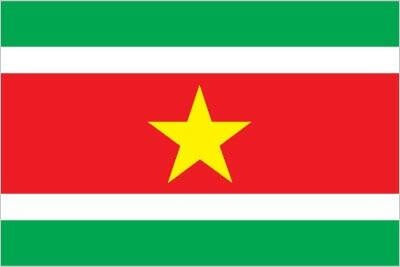
Official flag of Suriname
Cultural Geography of Suriname
Largest Cities / Metro Areas
Ranked by population estimate (2022):
-
Paramaribo (223,000): Paramaribo is the capital and largest city of Suriname, located on the banks of the Suriname River. It is a multicultural city known for its Dutch colonial architecture, which is evident in the many brightly colored wooden buildings that line the streets. The Historic Inner City of Paramaribo is a UNESCO World Heritage Site. Paramaribo is also home to several museums, including the Surinaams Museum, which houses exhibits on the history of Suriname. Some of Paramaribo's most popular tourist attractions include Fort Zeelandia, the Presidential Palace, Saint Peter and Paul Cathedral, and Neveh Shalom Synagogue, the oldest synagogue in the Western Hemisphere.
-
Lelydorp (18,000): Lelydorp is located in the Wanica District on the country's northeast coast. Lelydorp was founded in 1905 by Cornelis Lely, the governor of Suriname at the time. The city was originally named Kofi Djompo after a Maroon rebel leader. However, the name was changed to Lelydorp in 1913. Lelydorp is a relatively young city, and it is still growing rapidly. The city has several industries, including agriculture, manufacturing, and tourism.
-
Brokopondo (2,800 / 14,000): Brokopondo is a Suriname town of approximately 2,800 located on the west shore of the Suriname River, just north of the Afobaka dam. It is the capital of the Brokopondo District, with a population of approximately 14,000. Brokopondo was founded in 1958 when the Afobaka Dam was built. The dam created the Brokopondo Reservoir, which flooded a large rainforest area. The town was built to house the workers who built the dam and their families. Other villages in the district include Brownsweg and Kwakoegron.
-
Nieuw Nickerie (13,000): Nieuw Nickerie is the capital of the Nickerie District and is located on the coast of the Atlantic Ocean, near the border with Guyana. Dutch colonists founded the city named Nieuw Rotterdam in the early 19th century. It was renamed Nieuw Nickerie in 1821 after the Nickerie River that flows through the town. The city is a major economic center for Suriname and a central transportation hub. Nieuw Nickerie is home to people of Indian, Javanese, Creole, and Chinese descent. The city has a rich culture and is home to festivals, including the Nickerie Regatta, held annually in July.
-
Albina (12,000): Albina is a town in eastern Suriname and the capital of the Marowijne District. The village lies on the west bank of the Marowijne River (Maroni River), which forms the border with French Guiana. Albina has several businesses, including hotels, restaurants, shops, and small factories. The town is also a central transportation hub and is served by a ferry service to French Guiana and a bus service to Paramaribo. Albina is a popular tourist destination known for its beautiful beaches, relaxed atmosphere, and proximity to the rainforest.
-
Meerzorg (9,200): Meerzorg is a town and municipality in Suriname, located on the eastern bank of the Suriname River, directly opposite the capital Paramaribo. The village was founded in the 17th century as a sugar plantation. The plantation was abandoned in the early 19th century, and formerly enslaved people resettled the town. Meerzorg is a quiet town with a relaxed atmosphere. The village is home to several shops, restaurants, and hotels. There are also several beaches in the area, which are popular with tourists.
-
Wageningen (8,800): Wageningen is a community resort and an agricultural center in Suriname. It is located in the coastal area of West Suriname in the Nickerie District. Founded in 1949, the town was known as the rice center of Suriname. Wageningen is a multicultural town home to people of Indian, Javanese, Creole, and Chinese descent. The town has a rich culture and is home to festivals, including the Nickerie Regatta, held annually in July.
-
Totness (7,900): Totness is a town in the Coronie District of Suriname, located on the west bank of the Coppename River, about 120 km (75 mi) west of Paramaribo. It is the capital of the Coronie District. Totness was founded in 1668 by the Dutch and was originally called Fort Zeelandia. The name was changed to Totness in 1720, after the town of Totnes in Devon, England. The village is home to several historical buildings, including Fort Zeelandia, now a museum, and the St. Peter and Paul Church, built in 1752.
-
Nieuw Amsterdam (7,100): Nieuw Amsterdam is the capital of the Commewijne District in Suriname. It is a small coastal town situated at the confluence of the Suriname and Commewijne rivers, just across from Paramaribo, the country's capital. A significant number (around 1200) of the town's residents are of Javanese and East Indian origin. It is the location of the historical Fort Nieuw-Amsterdam, today an open-air museum.
-
Zanderij (6,400): Zanderij is a village located in the northern part of Suriname, 50 km (31 mi) south of Paramaribo, the capital. The town is a central transportation hub and is served by an airport and a ferry service to Guyana Zanderij, a popular tourist destination known for its beautiful beaches, relaxed atmosphere, and proximity to the rainforest. The village is also home to several historical sites, including Fort Zanderij, built in the 18th century.
Administrative Divisions
Suriname is divided into ten administrative districts: the urban districts of Paramaribo (the capital) and Wanica, six rural districts in the coastal area, and two in the interior.
Districts
Following is a list of the ten districts, along with their capital cities in parentheses and a brief description:
-
Brokopondo (Capital: Brokopondo): Brokopondo is known for its vast reservoir, the Brokopondo Reservoir (or Prof. W.J. van Blommestein Lake), created by the Afobaka Dam. It offers opportunities for water sports and outdoor activities.
-
Commewijne (Capital: Nieuw Amsterdam): Commewijne is known for its historic plantations and colonial-era architecture. It's a popular destination for cultural and heritage tourism.
-
Coronie (Capital: Totness): Coronie is a relatively small district known for its coastal landscapes, rice fields, and peaceful atmosphere.
-
Marowijne (Capital: Albina): Marowijne is located in the eastern part of Suriname and shares a border with French Guiana. It's known for its diverse culture and proximity to the Maroni River.
-
Nickerie (Capital: Nieuw Nickerie): Nickerie is the rice bowl of Suriname, known for its extensive rice fields. It's also a hub for agriculture and trade.
-
Para (Capital: Paranam): Para is home to the Afobaka Dam and Brokopondo Reservoir. It's an important region for hydropower generation and natural beauty.
-
Paramaribo (Capital: Paramaribo): Paramaribo is the capital city of Suriname and a UNESCO World Heritage site. It's known for its colonial architecture, diverse culture, and vibrant street life.
-
Saramacca (Capital: Groningen): Saramacca is an agricultural region known for its banana and citrus plantations. It also has a rich cultural heritage.
-
Sipaliwini (Capital: None, indigenous communities primarily inhabit the district): Sipaliwini is the largest district in Suriname and is predominantly covered by the Amazon rainforest. It's home to numerous indigenous tribes and is known for its natural beauty and biodiversity.
-
Wanica (Capital: Lelydorp): Wanica is located near Paramaribo and is known for its suburban communities, residential areas, and commercial zones.
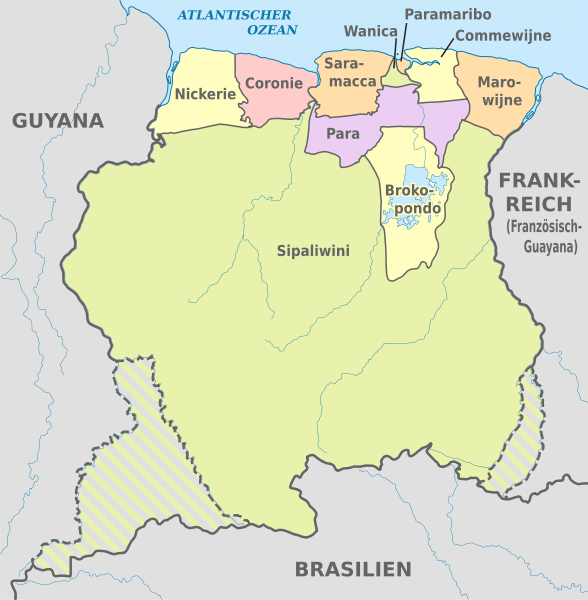
Map of administrative divisions of Suriname.
Border Disputes
Suriname is involved in territorial disputes with both Guyana and French Guiana. Its maritime boundary with Guyana has long been disputed as well. Suriname claims about 15,000 sq km (5,800 sq mi) between two tributaries of the Courantyne River in southern Guyana. It also claims approximately 13,000 sq km (5,000 sq mi) between the Litani and Maroni rivers in the southwest corner of French Guiana.
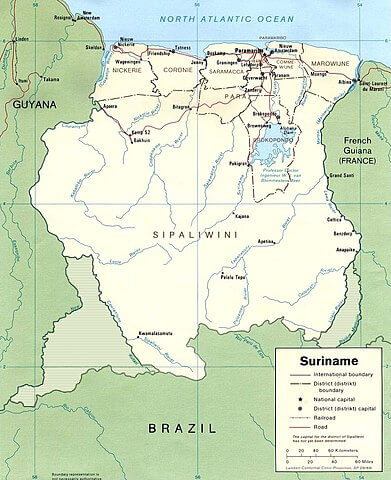
Map of Suriname illustrating disputed border territories.
Geographic Regions (Zones)
The natural landscape of Suriname consists of rainforests, savanna, coastal swamps, and the two main mountain ranges: the Bakhuis and Van Asch Van Wijck Mountains.
The country is situated on the Guiana Shield, one of the three cratons of the South American Plate. It can be divided into two main geographic regions:
-
Northern Coastal Plain: the northern lowlands along the Atlantic coast
-
Southern Rainforest and Savanna: rainforest and savanna region along the border with Brazil
See more: Natural Landscape of Suriname
Historical, Cultural, and Natural Landmarks
Suriname, located on the northeastern coast of South America, offers a unique blend of historical, cultural, and natural landmarks. Here are some notable examples by zone:
Northern Coastal Plain
Suriname's Northern Coastal Plain region is characterized by its coastal landscapes, rivers, and historical landmarks. Here is a list of attractions, protected areas, and national landmarks within this region:
-
Galibi Nature Reserve: Located in northeastern Suriname, Galibi Nature Reserve is known for its pristine beaches and nesting sites for sea turtles, including the endangered leatherback turtle. It offers opportunities for turtle-watching and experiencing the coastal area's natural beauty.
-
Commewijne River: The Commewijne River runs along the northern coast of Suriname and is known for its scenic beauty. A boat tour along the river allows visitors to explore picturesque landscapes, visit former plantations, and witness river and ocean waters blending.
-
Bigi Pan Nature Reserve: Situated in the northwest, Bigi Pan Nature Reserve is a vast wetland area consisting of mangroves, mudflats, and open water. It is an essential habitat for numerous bird species, including flamingos, herons, and ibises. Boat tours allow visitors to observe the rich birdlife and enjoy the serene natural surroundings.
-
Wia Wia Nature Reserve: This protected area, located along the northeastern coast, is characterized by its mangrove forests, mudflats, and diverse bird species. It is an important nesting site for numerous migratory and resident birds.
-
Fort Nieuw Amsterdam: Situated on the eastern bank of the Suriname River, Fort Nieuw Amsterdam is a historical landmark and museum. The Dutch built it in the 18th century to protect the colony from potential invasions. Visitors can explore the fort's remains, learn about Suriname's colonial history, and enjoy beautiful river views.
-
Paramaribo Historic Inner City: Paramaribo, the capital of Suriname, is a UNESCO World Heritage Site. Its historic inner city is known for its well-preserved colonial architecture, including wooden buildings with unique Dutch, British, and Creole influences. Walking through the city allows visitors to admire the charming streets, visit historic sites, and immerse themselves in Surinamese culture.
-
Commewijne District: Situated just east of Paramaribo, the Commewijne District offers a glimpse into Suriname's colonial history. It is known for its former plantation estates, such as Peperpot Nature Park and Mariënburg, which provide insights into the country's colonial past and the history of the plantation economy.
-
Jodensavanne: Located on the Suriname River, Jodensavanne is a historic site that was once a thriving Jewish community in the 17th century. Today, visitors can explore the ruins of the old synagogue and cemetery and learn about the history and contributions of the Jewish community in Suriname.
-
Peperpot Nature Park: Once a former coffee and cocoa plantation, Peperpot Nature Park is now a protected area and nature reserve. Located near Paramaribo, it offers nature trails, birdwatching opportunities, and a chance to explore the remnants of the plantation's infrastructure, including old buildings and machinery.
-
Suriname River: The Suriname River is a significant waterway flowing through the country's northern part. It is an important transportation route and offers opportunities for river cruises, fishing, and enjoying the scenic beauty of the river and its surroundings.
Southern Rainforest and Savanna
The southernmost region of Suriname consists mainly of dense rainforests and remote areas. While fewer established tourist attractions exist compared to other regions, there are still notable natural features and protected areas worth exploring. Here is a list of attractions in the southernmost region of Suriname:
-
Central Suriname Nature Reserve: This UNESCO World Heritage Site is the largest protected area in Suriname, covering over 1.6 million hectares. It encompasses pristine rainforests, savannas, and mountains, offering diverse ecosystems, wildlife, and opportunities for ecotourism.
-
Brownsberg Nature Park: Located near the Brokopondo Reservoir, Brownsberg Nature Park is a popular ecotourism destination. It features lush rainforests, scenic waterfalls, and stunning viewpoints overlooking the savannas and the reservoir.
-
Raleighvallen Nature Reserve: Situated along the Coppename River, Raleighvallen Nature Reserve is renowned for its remarkable biodiversity and pristine rainforests. The reserve is home to the impressive Raleighvallen (Raleigh Falls) and Voltzberg, a striking granite dome that offers panoramic views of the surrounding area.
-
Coppename Monding Nature Reserve: This nature reserve encompasses the mouth of the Coppename River and the adjacent coastal area. It is an important breeding ground for marine turtles, including the endangered leatherback turtle. Visitors can observe nesting turtles during the nesting season.
-
Browns Mountain: Located in the southern part of Suriname, Browns Mountain (Brownsberg) is a prominent peak offering panoramic views of the surrounding rainforest and the Brokopondo Reservoir. The mountain is a popular destination for hiking and birdwatching.
-
Kasikasima: Situated in the southern part of Suriname, Kasikasima is a stunning mountain range and an important sacred site for indigenous communities. It offers breathtaking landscapes, unique rock formations, and the opportunity to learn about indigenous culture and traditions.
-
Voltzberg Nature Reserve: This protected area is known for its impressive granite outcrop called the Voltzberg. Hiking to the top of Voltzberg rewards visitors with panoramic views of the surrounding rainforest and the opportunity to spot diverse bird species and other wildlife.
-
Tafelberg Nature Reserve: Located in the southern part of Suriname, Tafelberg Nature Reserve features Tafelberg, a tabletop mountain with cliffs and diverse ecosystems. The climb to the top is challenging but rewarding, offering breathtaking views and unique flora and fauna.
